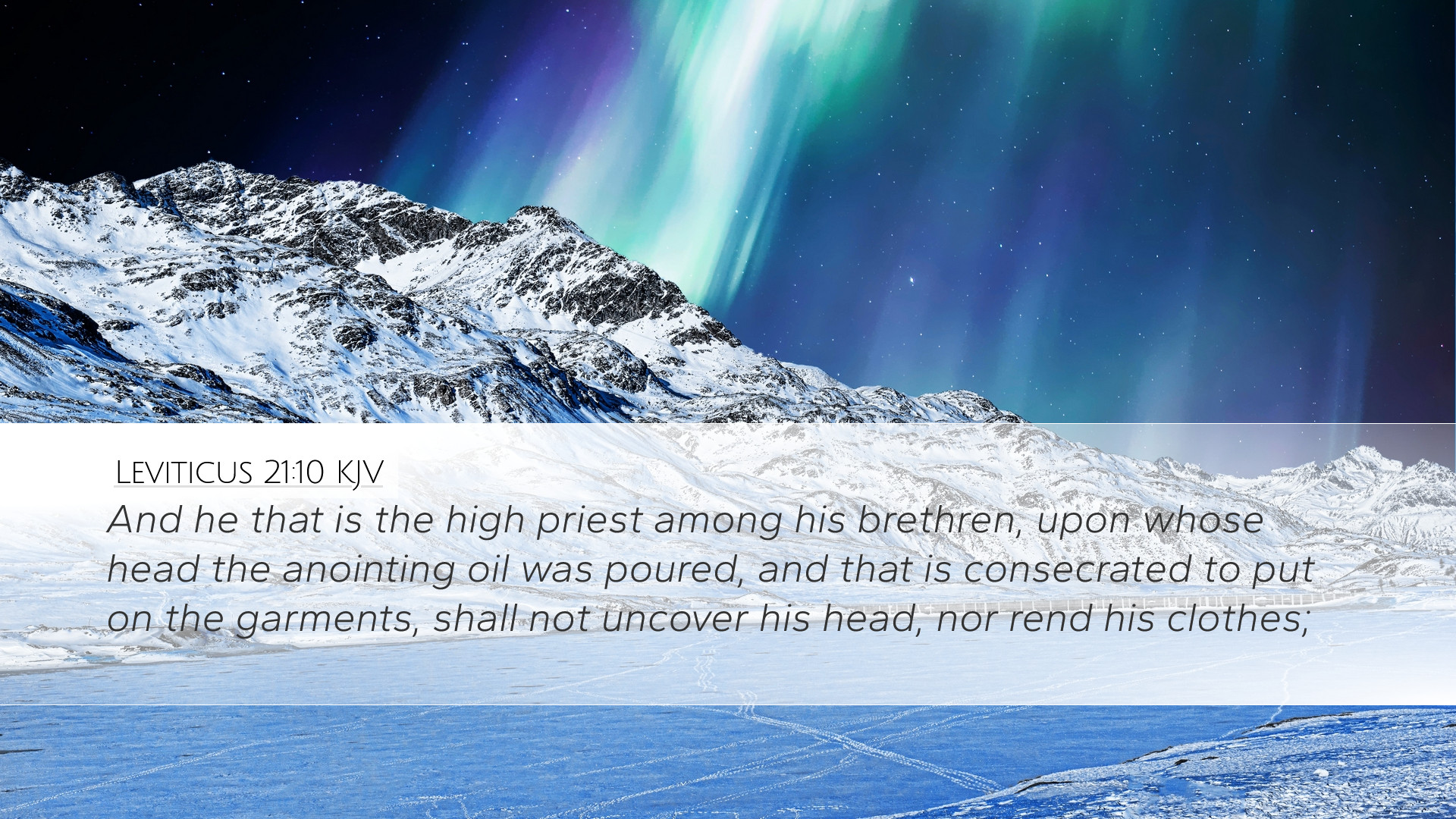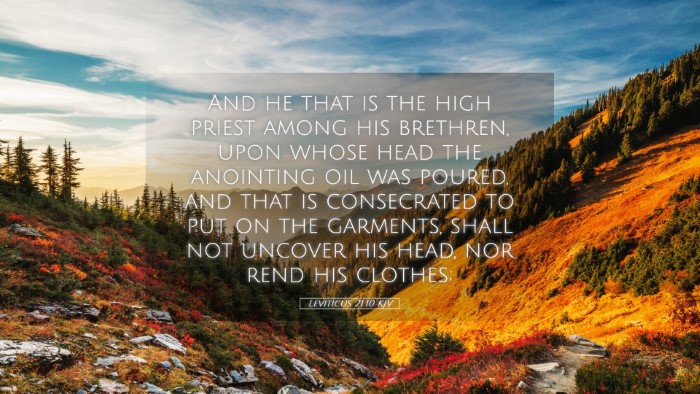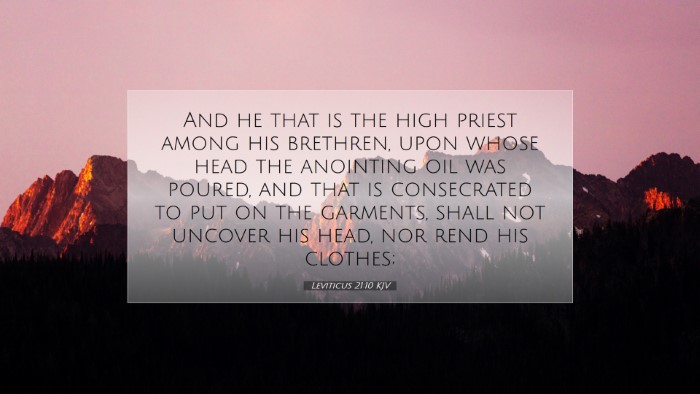Commentary on Leviticus 21:10
Verse: "And he that is the high priest among his brethren, upon whose head the anointing oil was poured, and that is consecrated to put on the garments, shall not uncover his head, nor rend his clothes."
Overview
This verse comes from the Priestly Code in Leviticus, which outlines the responsibilities and standards required of the priests, particularly the High Priest. This chapter serves to emphasize the unique role of the High Priest in Israelite worship and the inherent dignity of this position.
Insights from Public Domain Commentaries
Matthew Henry's Commentary
Matthew Henry emphasizes the distinctive nature of the High Priest's office. He notes that the anointing oil symbolizes the sanctification and consecration which set the High Priest apart from others. The act of not uncovering his head signifies an ongoing state of readiness and respect, reiterating the principle that the High Priest continually represents the people before God.
- Consecration: The anointing oil denotes a divine appointment; thus the High Priest must maintain a holy demeanor.
- Dignity of Office: To rend his garments would display a sign of mourning or distress that is inappropriate for one who stands in the presence of God on behalf of the people.
- Symbolism of Dress: The garments of the High Priest are not merely ceremonial but signify his role as mediator between God and humanity.
Albert Barnes' Notes
Albert Barnes elaborates on the prerequisites for the High Priest, pointing out the necessity of a clear distinction between the holy and the profane. According to Barnes, the anointing establishes an indelible status that forbids the High Priest from actions that indicate disgrace or sorrow. He highlights the importance of this command as a means of preserving the sanctity of the priestly office.
- Priestly Responsibilities: The High Priest must embody a living example of holiness.
- Mourning Practices: The prohibition of actions like uncovering his head or tearing garments reflects the ongoing joy and duty of his position.
- Continuity of Service: The High Priest’s duties are paramount, and external signs of grief could undermine the people’s trust in his intercessory role.
Adam Clarke's Commentary
Adam Clarke provides a historical context to Lev 21:10, noting the cultural practices regarding mourning in ancient Israel. He interprets the injunction against the High Priest’s display of grief as a continuation of the requirements for maintaining a clear distinction between secular and sacred life. Clarke underscores that the anointing oil indicates divine approval and, as such, the High Priest must reflect a constant state of holiness.
- Impact of Anointment: The pouring of oil is a significant moment, marking the individual as God’s chosen representative.
- Public Perception: The High Priest's behavior could influence the nation's spiritual state; thus, he must not engage in practices that denote personal loss.
- Significance of Garments: The priestly garments are filled with spiritual meaning and play an essential part in the act of worship.
Theological Implications
This verse raises crucial philosophical questions regarding the nature of leadership within a spiritual community. The High Priest, ordained and anointed, stands as an avatar of divine authority and representation for Israel before God. The restrictions placed upon him serve to highlight the dignity of the sacred office and the seriousness of being an intermediary between God and mankind.
1. The Role of Anointing
The act of anointing with oil represents empowerment for service and denotes a life set apart for God's purposes. For pastors and theologians, this signifies the weight of their responsibility as spiritual leaders in maintaining the sanctity of their office.
2. Holiness and Mourning
Grief is a natural human emotion; however, in the context of the High Priest, it is emphasized that one's priestly duties take precedence. They symbolize the hope and redemption inherent in their relationship with God. Pastors might draw parallels here with their roles, encouraging their congregations to find hope even in sorrow.
3. Symbolism of Priesthood
The High Priest's garments were deeply significant, representing the glory of God and the seriousness of the role. The modern-day implications are evident in how church leaders must display professionalism, decorum, and a reflective nature of one's relationship with God in both their actions and attire.
Conclusion
Leviticus 21:10 presents a profound glimpse into the nature of divine service and the responsibilities borne by the High Priest. Drawing on historical, theological, and spiritual insights from various commentaries, it provides a basis for understanding how one might carry out their role as a leader or priest within the community of faith. The verse serves as a reminder that those chosen for leadership must not only uphold high standards of behavior but also reflect the character of God in their ministry.


